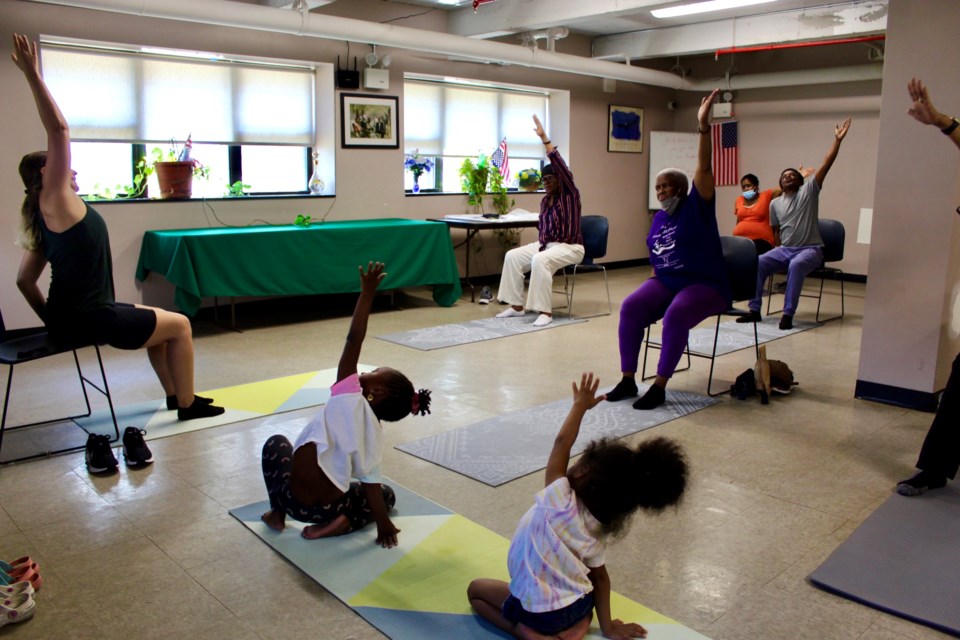New York City in the throes of a mental health crisis with our most at-risk populations bearing the brunt of a systemic issue.
Mental health issues do not only impact a person’s quality of life but can affect job security and housing stability. The interconnectedness of the mental health and housing crises in New York City create devastating consequences for individuals and entire communities.
One in five New Yorkers experiences a mental illness incident each year, yet hundreds of thousands are not connected to care. New Yorkers without health insurance, and Black, Latino, and AAPI New Yorkers are less likely to have access to mental health resources but more likely to experience mental health issues due to compounding social inequities, according to the New York City Department of Health and Hygiene.
In 2021, 38% of NYC high schoolers reported feeling sad or hopeless almost every day for at least two weeks within the year, and Latino/a (42%) and Black (41%) students were significantly more likely than white (29.9%) students to report feeling these emotions. In 2023, 48% of NYC teens were identified as having minimal depressive symptoms, 27% as having mild symptoms, 14% as having moderate symptoms and 11% as having severe symptoms.
The youth in New York City are hurting. And with issues like gang and gun violence plaguing our most vulnerable communities, teens without mental health support and strong community ties are even more at risk to adopt negative or violent behaviors.
At a time when mental health support is desperately needed across the city, we need to find innovative ways to bring these essential services directly to the communities that need them most.
Council Member Farah Louis saw the need to generate creative solutions to these crises and led the charge to bring an answer straight to Flatbush Gardens, one of the largest housing developments in Brooklyn, with almost 25% of residents receiving government housing subsidies.
Last January, Bridging Access to Care (BAC), a community-based non-profit with decades of experience providing social support services to under-served communities in New York City, opened a new community service site directly within Flatbush Gardens.
With the support of Council Member Louis, Clipper Equity provided BAC with free office space and other resources in their development, understanding that direct contact between respected service providers and residents would help make the community a more welcoming, stable place. Clipper Equity is completely covering BAC’s operating costs, allowing the organization to focus fully on the work at hand.
This partnership has so far been a resounding success.
From the start, BAC conducted a needs assessment and customized a plan for Flatbush Gardens that includes behavioral health, housing assistance, case management, care coordination, parenting and wellness workshops and other supportive services.
In early March, BAC began offering programs to community members at the Flatbush Gardens site. From monthly wellness events featuring free massages and yoga for stress reduction to mental health education workshops to support groups for families, BAC is offering Flatbush Gardens residents holistic care.
BAC’s activities not only include wellness events, but also working with management to onboard new tenants coming from the shelter system. BAC develops meaningful relationships with these formerly-homeless individuals to help stabilize their lives, manage legal obligations, and secure financial footing as they become part of the Flatbush Gardens community. Having BAC in such close quarters offers formerly homeless tenants a lifeline to move forward from massive hardships.
BAC’s programming for youth and teens, including mental health screens, harm reduction, job fairs and legal services referrals, are designed to help heal the neighborhood by giving its teens the support they need to turn the tide on pervasive cycles of violence plaguing the community.
From the start of March 2024 to the end of May 2024, the visit volume to BAC’s site at Flatbush Gardens has increased from 32 residents to 155 residents, an increase of about 385%.
More public officials and developers can follow Council Member Louis’ lead and forge transformative partnerships with non-profit organizations to streamline resources. We’ve seen the impact proximity to care can have on the most vulnerable populations and recognize the need for more integration among community partners.
Though the city needs to step up and generate impactful solutions for this widespread crisis, meaningful partnerships in high-risk residential communities can change hundreds of lives.
JJ Bistricer is partner & chief operating officer of Clipper Equity, a Brooklyn-based real estate company, and Nadine Akinyemi is chief executive of Bridging Access to Care.




